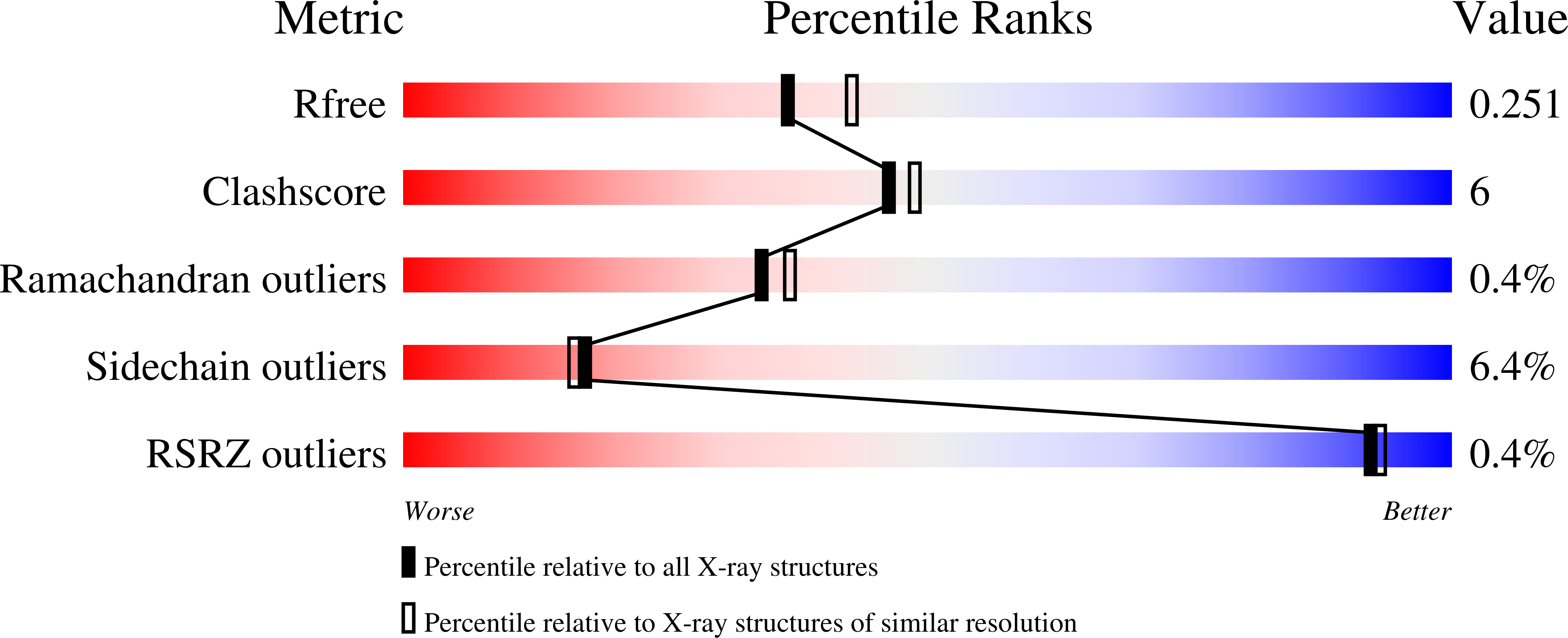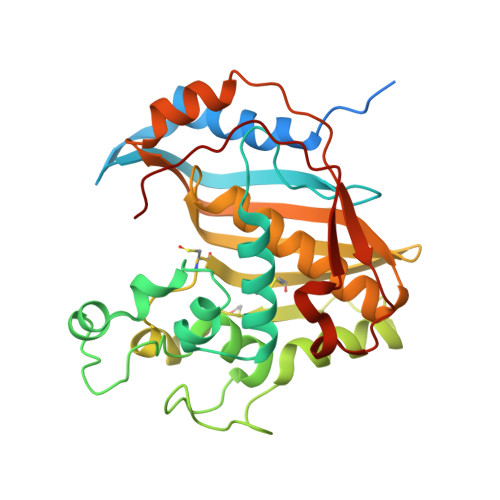Structural and Functional Characterization of the Human Thymidylate Synthase (hTS) Interface Variant R175C, New Perspectives for the Development of hTS Inhibitors.
Pozzi, C., Ferrari, S., Luciani, R., Costi, M.P., Mangani, S.(2019) Molecules 24
- PubMed: 30959951
- DOI: https://doi.org/10.3390/molecules24071362
- Primary Citation of Related Structures:
6QYQ - PubMed Abstract:
Human thymidylate synthase (hTS) is pivotal for cell survival and proliferation, indeed it provides the only synthetic source of dTMP, required for DNA biosynthesis. hTS represents a validated target for anticancer chemotherapy. However, active site-targeting drugs towards hTS have limitations connected to the onset of resistance. Thus, new strategies have to be applied to effectively target hTS without inducing resistance in cancer cells. Here, we report the generation and the functional and structural characterization of a new hTS interface variant in which Arg175 is replaced by a cysteine. Arg175 is located at the interface of the hTS obligate homodimer and protrudes inside the active site of the partner subunit, in which it provides a fundamental contribution for substrate binding. Indeed, the R175C variant results catalytically inactive. The introduction of a cysteine at the dimer interface is functional for development of new hTS inhibitors through innovative strategies, such as the tethering approach. Structural analysis, performed through X-ray crystallography, has revealed that a cofactor derivative is entrapped inside the catalytic cavity of the hTS R175C variant. The peculiar binding mode of the cofactor analogue suggests new clues exploitable for the design of new hTS inhibitors.
Organizational Affiliation:
Department of Biotechnology, Chemistry and Pharmacy, Department of Excellence 2018-2020, University of Siena, via Aldo Moro 2, 53100 Siena, Italy. pozzi4@unisi.it.























